Key takeaways:
- Ocean conservation is vital for biodiversity and climate regulation, emphasizing the connection between human actions and marine health.
- Plastic pollution poses a serious threat to marine ecosystems, with predictions indicating more plastic than fish in the ocean by 2050.
- Creative recycling methods, such as upcycling and transforming waste into art, can raise awareness about environmental issues and foster community engagement.
- Hands-on workshops and storytelling are effective strategies to inspire others to participate in ocean conservation through art and creativity.

Understanding Ocean Conservation Importance
The ocean is not just a vast body of water; it’s the lifeblood of our planet, playing a critical role in regulating climate and supporting biodiversity. I often think about how my childhood trips to the beach made me appreciate the soothing sound of waves and the vibrant marine life below the surface. When we contemplate the intricate ecosystems found underwater, it becomes clear that protecting these environments is crucial for our own survival.
Have you ever taken a moment to reflect on how your actions impact the ocean? Every piece of plastic that ends up in the water tells a story of neglect, affecting everything from tiny fish to large marine mammals. I remember the frustration I felt during a beach cleanup when I saw firsthand how a once-pristine shoreline had become a dumping ground for waste; it was a wake-up call for me about the urgent need for conservation efforts.
Understanding the importance of ocean conservation also means recognizing the connection between our health and the health of the seas. I’ve often wondered what future generations will experience if we don’t take action now. Will they cherish the same splendors of nature that I did, or will they only be able to view these wonders through photographs? The impact of our choices today resonates far beyond our immediate surroundings, shaping the ocean’s future and our shared planet.
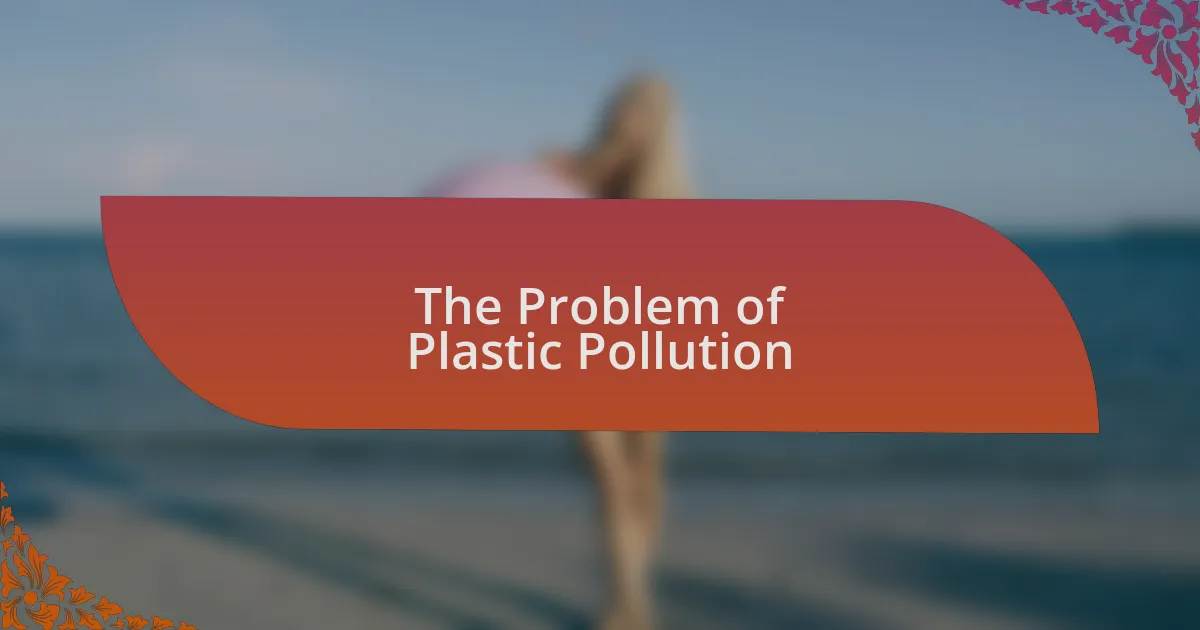
The Problem of Plastic Pollution
Plastic pollution is a pervasive issue that threatens marine health worldwide. I still vividly remember a recent kayaking trip where I paddled through a beautiful cove, only to be shocked by the debris floating around me. It struck me how something as mundane as a plastic bottle could disrupt this serene landscape and harm the very ecosystems I’ve grown to love.
Every year, millions of tons of plastic waste enter our oceans, negatively impacting wildlife and habitats. I often find myself asking: how many turtles will mistake plastic bags for jellyfish, their favorite meal? Seeing a plastic-wrapped starfish during a dive left me feeling a mix of anger and sadness, emphasizing just how devastating our oversight can be.
The statistics around plastic pollution are staggering, with estimates suggesting that by 2050, there could be more plastic in the ocean than fish. This thought keeps me up at night. I wonder how that reality will shape the oceans for future generations. Will children grow up recognizing the ocean as a vibrant ecosystem, or will it become just another graveyard of our discarded materials?
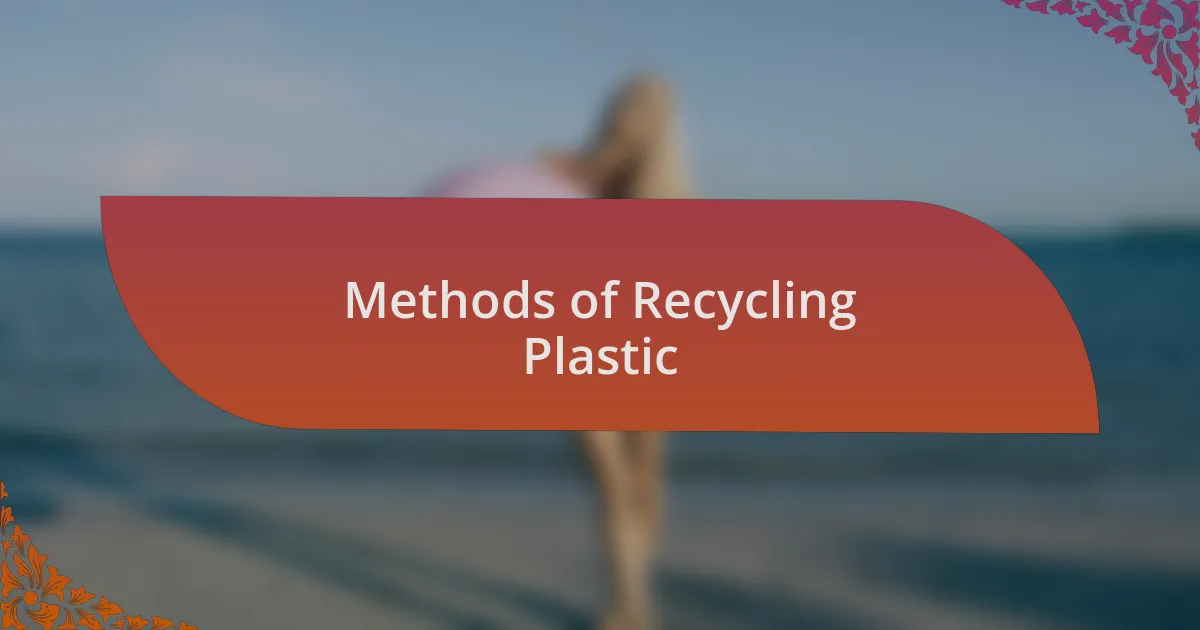
Methods of Recycling Plastic
Recycling plastic involves a range of methods that can breathe new life into discarded materials. One of the most common techniques is mechanical recycling, where plastics are shredded and melted down to produce new items. I remember visiting a local recycling facility and watching how clear plastic bottles transformed into flakes, which were then repurposed into vibrant eco-friendly fabric. It was inspiring to witness this process, as each step felt like a direct challenge to the waste problem we face.
Another method that has captured my attention is chemical recycling, where plastic is broken down at a molecular level to create essential raw materials. It’s fascinating to think about the science involved, and how it can potentially reduce the reliance on virgin resources. I can’t help but wonder: will chemical recycling become the game changer we need to tackle plastic pollution more effectively?
Lastly, there’s upcycling, which is a creative avenue that allows individuals to turn plastic waste into art or useful items. I once collaborated with a group of local artists who transformed plastic bags into eye-catching sculptures. Each piece told a story about our connection to the ocean and served not only as an art piece but also as a conversation starter about sustainability. How many of us can tap into our creativity to make a difference with the waste around us?
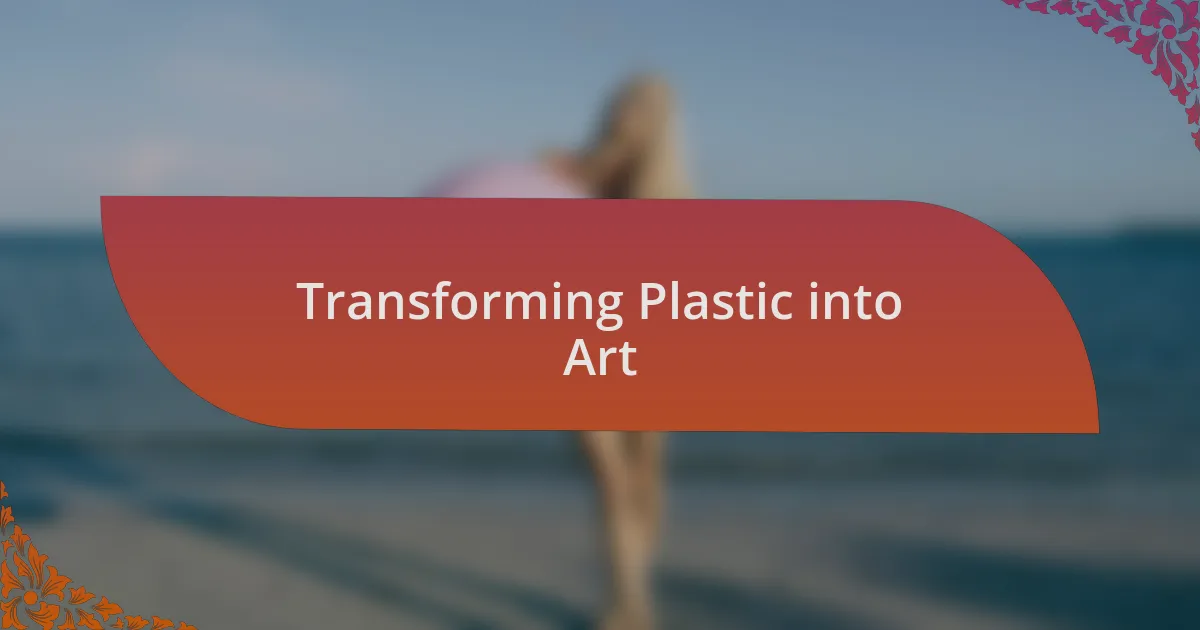
Transforming Plastic into Art
Transforming plastic into art is not just an act of creativity; it’s a powerful statement about the impact of waste on our environment. I recall a project where I helped transform plastic bottle caps into a vibrant mosaic mural. As we pieced together the colors, it became evident how something deemed worthless could emerge as a beautiful reflection of our society’s consumption habits. Isn’t it amazing how art can reshape our understanding of trash?
Engaging with discarded plastics has led me to appreciate the emotional weight behind each transformed piece. I once attended an art exhibit showcasing sculptures made from ocean plastic, and the haunting beauty left me speechless. Seeing the myriad of textures and forms inspired by something once deemed detrimental to our seas really shifted my perspective. How can art evoke such strong feelings while addressing urgent environmental issues?
The act of creating art from plastic waste invites a dialogue about sustainability that is both enriching and necessary. Last summer, I participated in a community workshop where we crafted functional art pieces, like planters and wall hangings, out of old fishing nets. It was eye-opening to see how collective creativity could spark awareness and action toward ocean conservation. Can you imagine the change we could ignite if every community tapped into their artistic potential to tackle pollution?
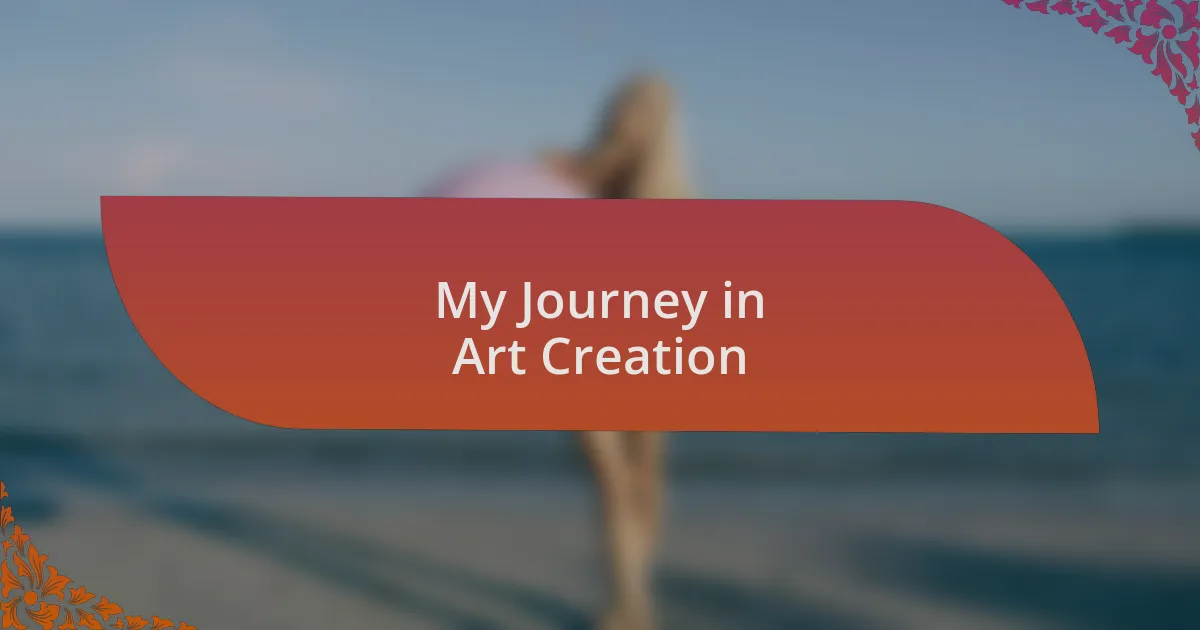
My Journey in Art Creation
Creating art from plastic waste has truly been a transformative experience for me. One of my most memorable projects involved crafting intricate jewelry from discarded plastic utensils. As I shaped and colored the pieces, I felt a sense of empowerment, watching what was once considered garbage evolve into something beautiful and wearable. Have you ever wondered how a simple fork can tell a story just as powerful as a canvas painting?
My journey took an unexpected turn during a local beach cleanup, where I encountered a massive amount of washed-up plastic debris. Inspired by the sheer volume and variety of these materials, I envisioned a large-scale installation that would capture the community’s attention. As I worked on this piece, I realized that every shard of plastic held a story and a past. Isn’t it fascinating how art can serve as a bridge, connecting us to the very issues we often overlook?
Each creation has deepened my commitment to ocean conservation. I remember the moment I unveiled a large mural made from plastic fishing gear at a local gallery; the responses from viewers were overwhelmingly positive. Their reactions reminded me that this artistic journey is not only about personal expression but also fostering environmental awareness. How can we not feel a sense of responsibility after witnessing the transformation of waste into something that moves hearts and minds?
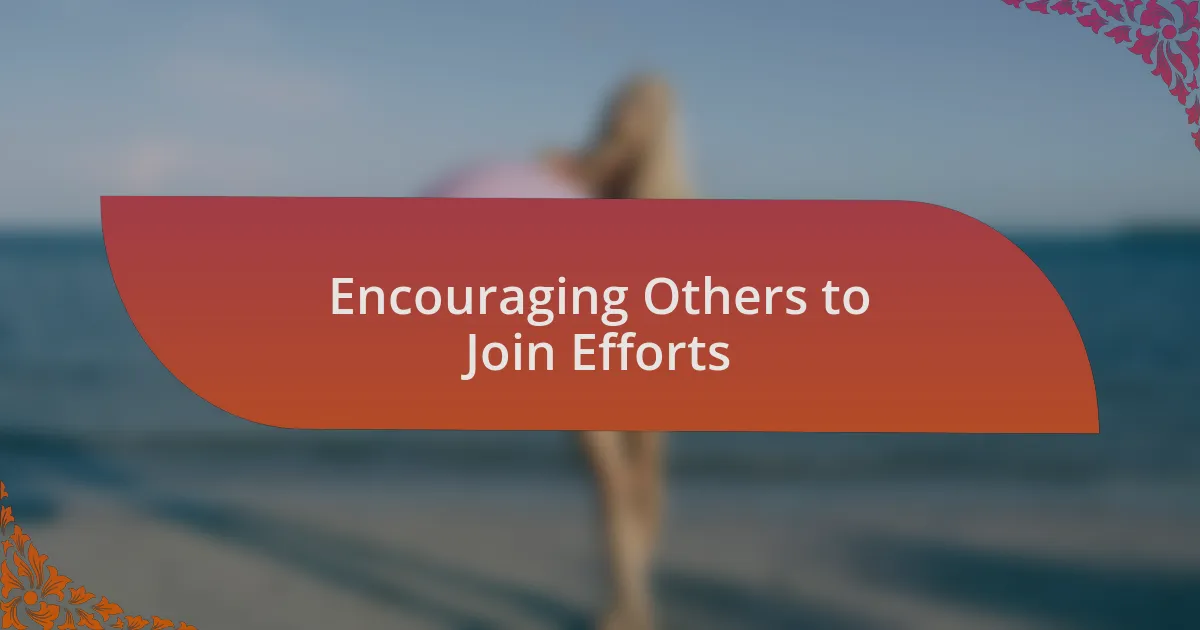
Encouraging Others to Join Efforts
In my experience, the most effective way to encourage others to join in the effort of transforming plastic into art is through hands-on workshops. I vividly remember hosting one at my local community center, where participants of all ages gathered with their own plastic waste. As I guided them in creating art pieces, I could see their faces light up with inspiration and pride. Have you ever witnessed someone discover their creativity for the first time? It’s a powerful moment.
Social media has also become a vital tool in spreading the message beyond my immediate community. I often share progress photos of my projects and the stories behind them, which has sparked conversations and motivated others to take similar initiatives. It’s incredible how a single post can resonate with someone miles away. Don’t you think it’s rewarding to connect with like-minded individuals who are passionate about the same cause?
Lastly, I find that storytelling plays a crucial role in motivating others. When I share my journey and the profound impact art has had on my perspective regarding ocean conservation, I see people not just nodding along but truly engaging with the issue. How can we inspire change if we don’t share our narratives? Each story shared acts as a ripple, encouraging others to think about their own actions and their potential to create art from discarded materials.